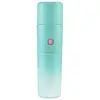What's inside
What's inside
 Key Ingredients
Key Ingredients

No key ingredients
 Benefits
Benefits

 Concerns
Concerns

 Ingredients Side-by-side
Ingredients Side-by-side

Water
Skin ConditioningButylene Glycol
HumectantPentylene Glycol
Skin ConditioningNiacinamide
SmoothingSaccharomyces/Rice Ferment Filtrate
Skin ConditioningCamellia Sinensis Leaf Extract
AntimicrobialCladosiphon Okamuranus Extract
Skin ConditioningSodium Hyaluronate
HumectantLuffa Cylindrica Fruit/Leaf/Stem Extract
Skin ConditioningSalvia Sclarea Oil
MaskingFoeniculum Vulgare Oil
EmollientCitrus Aurantifolia Juice
CleansingEucalyptus Globulus Leaf Oil
PerfumingRosmarinus Officinalis Leaf Oil
MaskingRosa Multiflora Fruit Extract
MaskingCitrus Aurantium Dulcis Juice
Skin ConditioningArtemisia Princeps Leaf Extract
Skin ConditioningCymbopogon Martini Oil
MaskingCitrus Limon Juice
Skin ConditioningLavandula Angustifolia Oil
MaskingMentha Arvensis Leaf Oil
MaskingCananga Odorata Flower Oil
MaskingCrataegus Cuneata Fruit Extract
Skin ConditioningZiziphus Jujuba Fruit Extract
Skin ConditioningCitrus Paradisi Fruit Extract
Skin ConditioningPyrus Malus Fruit Extract
Skin ConditioningBelamcanda Chinensis Root Extract
Skin ConditioningEriobotrya Japonica Leaf Extract
Skin ConditioningHouttuynia Cordata Extract
Skin Conditioning1,2-Hexanediol
Skin ConditioningPPG-6-Decyltetradeceth-20
EmulsifyingPEG-30 Glyceryl Isostearate
PEG-50 Glyceryl Isostearate
CleansingPropanediol
SolventSodium Citrate
BufferingPentasodium Pentetate
Citric Acid
BufferingEthylhexylglycerin
Skin ConditioningAlcohol
AntimicrobialPhenoxyethanol
PreservativeWater, Butylene Glycol, Pentylene Glycol, Niacinamide, Saccharomyces/Rice Ferment Filtrate, Camellia Sinensis Leaf Extract, Cladosiphon Okamuranus Extract, Sodium Hyaluronate, Luffa Cylindrica Fruit/Leaf/Stem Extract, Salvia Sclarea Oil, Foeniculum Vulgare Oil, Citrus Aurantifolia Juice, Eucalyptus Globulus Leaf Oil, Rosmarinus Officinalis Leaf Oil, Rosa Multiflora Fruit Extract, Citrus Aurantium Dulcis Juice, Artemisia Princeps Leaf Extract, Cymbopogon Martini Oil, Citrus Limon Juice, Lavandula Angustifolia Oil, Mentha Arvensis Leaf Oil, Cananga Odorata Flower Oil, Crataegus Cuneata Fruit Extract, Ziziphus Jujuba Fruit Extract, Citrus Paradisi Fruit Extract, Pyrus Malus Fruit Extract, Belamcanda Chinensis Root Extract, Eriobotrya Japonica Leaf Extract, Houttuynia Cordata Extract, 1,2-Hexanediol, PPG-6-Decyltetradeceth-20, PEG-30 Glyceryl Isostearate, PEG-50 Glyceryl Isostearate, Propanediol, Sodium Citrate, Pentasodium Pentetate, Citric Acid, Ethylhexylglycerin, Alcohol, Phenoxyethanol
 Reviews
Reviews

Alternatives
Ingredients Explained
These ingredients are found in both products.
Ingredients higher up in an ingredient list are typically present in a larger amount.
Citric Acid is an alpha hydroxy acid (AHA) naturally found in citrus fruits like oranges, lemons, and limes.
Like other AHAs, citric acid can exfoliate skin by breaking down the bonds that hold dead skin cells together. This helps reveal smoother and brighter skin underneath.
However, this exfoliating effect only happens at high concentrations (20%) which can be hard to find in cosmetic products.
Due to this, citric acid is usually included in small amounts as a pH adjuster. This helps keep products slightly more acidic and compatible with skin's natural pH.
In skincare formulas, citric acid can:
While it can provide some skin benefits, research shows lactic acid and glycolic acid are generally more effective and less irritating exfoliants.
Most citric acid used in skincare today is made by fermenting sugars (usually from molasses). This synthetic version is identical to the natural citrus form but easier to stabilize and use in formulations.
Read more about some other popular AHA's here:
Learn more about Citric AcidPentylene glycol is typically used within a product to thicken it. It also adds a smooth, soft, and moisturizing feel to the product. It is naturally found in plants such as sugar beets.
The hydrophilic trait of Pentylene Glycol makes it a humectant. As a humectant, Pentylene Glycol helps draw moisture from the air to your skin. This can help keep your skin hydrated.
This property also makes Pentylene Glycol a great texture enhancer. It can also help thicken or stabilize a product.
Pentylene Glycol also acts as a mild preservative and helps to keep a product microbe-free.
Some people may experience mild eye and skin irritation from Pentylene Glycol. We always recommend speaking with a professional about using this ingredient in your routine.
Pentylene Glycol has a low molecular weight and is part of the 1,2-glycol family.
Learn more about Pentylene GlycolPhenoxyethanol is a preservative that has germicide, antimicrobial, and aromatic properties. Studies show that phenoxyethanol can prevent microbial growth. By itself, it has a scent that is similar to that of a rose.
It's often used in formulations along with Caprylyl Glycol to preserve the shelf life of products.
Sodium Citrate is the sodium salts of citric acid. In skincare, it is used to alter pH levels and acts as a preservative.
Its main functions are to maintain the pH of a product and neutralize metal ions.
The acidity of our skin is maintained by our glands and skin biome; normal pH level of skin is slightly acidic (~4.75-5.5).
Being slightly acidic allows our skin to create an "acid mantle". This acid mantle is a thin barrier that protects our skin from bacteria and contaminants.
Learn more about Sodium CitrateWater. It's the most common cosmetic ingredient of all. You'll usually see it at the top of ingredient lists, meaning that it makes up the largest part of the product.
So why is it so popular? Water most often acts as a solvent - this means that it helps dissolve other ingredients into the formulation.
You'll also recognize water as that liquid we all need to stay alive. If you see this, drink a glass of water. Stay hydrated!
Learn more about Water